UNITED NATIONS: (IPS) – When UN Secretary-General Antonio Guterres addressed the 193-member General Assembly last December, he focused on the smoldering climate crisis– pointing out that the last five years have been the hottest ever recorded.
Ice caps are melting, he said, In Greenland alone, 179 billion tonnes of ice melted in July. Permafrost in the Arctic is thawing 70 years ahead of projections. Antarctica is melting three times as fast as a decade ago.
“Ocean levels are rising quicker than expected, putting some of our biggest and most economically important cities at risk. More than two-thirds of the world’s megacities are located by the sea. And while the oceans are rising, they are also being poisoned,” Guterres warned.
And as the planet burns, one million species in the world’s eco-system are in near-term danger of extinction
According to a new survey of 222 leading scientists from 52 countries conducted by Future Earth, there are five global risks — failure of climate change mitigation and adaptation; extreme weather events; major biodiversity loss and ecosystem collapse; food crises; and water crises. And four of them — climate change, extreme weather, biodiversity loss, and water crises — were deemed as most likely to occur?
Asked about the impending disaster, Dr. Anne Larigauderie, Executive Secretary of the Intergovernmental Platform on Biodiversity and Ecosystem Services (IPBES) told IPS that climate change, extreme weather events, biodiversity loss and food and water crises are already happening, primarily as a result of human activities, and they are deeply impacting the lives of people around the world.
“It is therefore imperative for the science and expert community to make their voices heard – as Future Earth has done, building on the key messages of the IPBES Global Assessment Report – to provide decision-makers with the evidence and options they need to act.”
Of real significance, however, is that it is not just the voice of science that is now speaking up for nature – consider that the global business community has also become increasingly vocal about the risks of the nature crisis and the need for evidence-informed action.
For example, in the World Economic Forum’s latest Global Risk Report, the top five perceived risks are all environmental and “systems-level thinking,” as called for.
Decision-makers have a wide range of options across sectors, systems and scales to shift to more sustainable pathways.
One million species face extinction, but the solutions to the nature crisis are still within our reach, said Dr Larigauderie, in an interview with IPS.
In the run-up to October’s historic UN Biodiversity Conference, officials and experts will convene at FAO headquarters, Rome, 24-29 Feb. for negotiations on the initial draft of a landmark post-2020 global biodiversity framework and targets for nature to 2030.
The new framework will be considered by the 196 Parties to the Convention on Biological Diversity (CBD) at the 2020 UN Biodiversity Conference (CBD COP15), Kunming, China, 15-28 Oct.
Excerpts from the interview:
IPS: How many of the 20 Aichi biodiversity targets—including the integration of biodiversity values into national and local development and poverty reduction strategies – have been achieved so far/will still be achieved even as the 2020 deadline is looming over the horizon?
Dr. Larigauderie: The IPBES Global Assessment Report shows that, of the 20 Aichi Biodiversity Targets, good progress has been made towards components of just 4 target, moderate progress towards components of 7 more targets, with poor progress towards all components of 6 other targets. Conservation actions, including protected areas, efforts to manage unsustainable use and address the illegal capture and trade of species, and the translocation and eradication of invasive species, have been successful in preventing the extinction of some species.
Good progress has been made on less than 10% of the 54 total elements. On 39% of the elements, poor progress and even some loss of progress has been seen.
As a result, the state of nature overall continues to decline, with 12 of 16 indicators showing significantly worsening trends.
It has never been more urgent for decision-makers at every level to have the best evidence and heed the warnings of science, for the decisions made now will have direct implications for our shared future.
IPS: How is the world doing on the Sustainable Development Goals (SDGs), especially as regards the impact of the nature crisis and the likely missing of most of the Aichi Biodiversity Targets on efforts to achieve these?
Dr Larigauderie: Human development depends directly on nature – from food and water security, to jobs, health and general well-being. The rapid declines we are seeing now in biodiversity, and many of nature’s contributions to people, mean that most international development goals will not be achieved – unless we make fundamental, system-wide changes. The IPBES Global Assessment Report found that 80% of assessed SDG targets will be undermined by negative trends in nature.
The Sustainable Development Goals and the Aichi Biodiversity Targets are closely connected, with many of the Aichi Targets having been integrated into the SDGs.
Our failure to achieve the Aichi Targets does not bode well for efforts to achieve the SDGs – unless we see fundamental, system-wide reorganization across technological, economic and social factors, including paradigms, goals and values – to tackle the direct and the indirect drivers of the nature crisis.
Besides clear connections to climate, oceans and land, the nature crisis has direct implications for poverty, hunger, health, water, and cities in addition to more a complex relationship to education, gender equality, reducing inequalities, and promoting peace and justice.
Without transformative change addressing both the direct and indirect drivers of biodiversity loss, we will not achieve the Sustainable Development Goals.
IPS: How will the rising global population — from the current 7.6 billion to an estimated 8.6 billion in 2030, with 43 cities reaching over 10 million each by 2030– have an impact on biodiversity targets? There are already warnings that the increase in population will have negative implications on the demand for resources, including food, infrastructure and land use.
Dr Larigauderie: Population growth is a major indirect driver of change in nature. Since 1970, the human population has more than doubled, but at the same time, per capita consumption has also risen sharply [15% since 1980], the global economy has grown nearly fourfold, global trade has grown tenfold, and the environmental and social costs of production and consumption have shifted away from those most directly responsible.
In other words, population growth is important but is only one of many key indirect drivers of change underpinning the unsustainable use of our natural resources. Other important indirect drivers include economy and technology, institutions and governance and conflicts, all of these being dependant on our values and behaviours.
Addressing all of the indirect drivers, including population growth, in an integrated and holistic way, will best enable us to achieve our shared global development goals.
Indeed, as the co-chairs of the CBD’s Open-ended Working Group on the Post-2020 Global Biodiversity Framework note, “the wide-ranging changes that are needed to reach the 2050 Vision will require an unprecedented degree of collaboration and whole-of-society engagement.” (Zero draft, page 3, 6(f))
IPS: In this important “super year” for nature, with major milestones expected on both climate change and biodiversity, what plans are there to bring the science/expert communities from both climate and biodiversity together to help best inform the decisions and actions for the coming decade?
Dr Larigauderie: 2020 has real potential to be a turning point for society, where we can begin to holistically transform our relationship with nature. The ‘Super Year for Nature’ is an opportunity for decision-makers at every level of society to listen and act on the science on both biodiversity and climate change. The stakes could not be higher.
Climate change and biodiversity loss are inseparable challenges that must be addressed together, in the scientific community as well as in policy and business.
From 12 –14 May this year, well before the two major UN biodiversity and climate conferences in 2020, IPBES and the IPCC will co-sponsor a workshop – the first of its kind – to bring leading scientists together to focus on the opportunities to meet both of these challenges and on the risks of addressing them separately from one another.
The workshop report will be an important document informing the CBD and UNFCCC Conferences of the Parties (COP15 and COP 26, respectively) regarding implementation of the Paris Agreement, the post-2020 biodiversity framework and the Sustainable Development Goals.
The IPBES Global Assessment found that nature-based solutions can provide more than one-third of climate mitigation needed to keep warming below 2°C.
The writer can be contacted at thalifdeen@ips.org
 “The graphite inside this ruby is really unique. It’s the first time we’ve seen evidence of ancient life in ruby-bearing rocks,” says Yakymchuk. “The presence of graphite also gives us more clues to determine how rubies formed at this location, something that is impossible to do directly based on a ruby’s colour and chemical composition.”
“The graphite inside this ruby is really unique. It’s the first time we’ve seen evidence of ancient life in ruby-bearing rocks,” says Yakymchuk. “The presence of graphite also gives us more clues to determine how rubies formed at this location, something that is impossible to do directly based on a ruby’s colour and chemical composition.”
 Torrential rain has battered the coastal state of Kerala last week, causing rivers to swell and flooding roads that left vehicles submerged in muddy waters, with some houses reduced to rubble.
Torrential rain has battered the coastal state of Kerala last week, causing rivers to swell and flooding roads that left vehicles submerged in muddy waters, with some houses reduced to rubble. “Reliance New Energy Solar Ltd (RNESL), a wholly owned subsidiary of RIL, has acquired REC Solar Holdings AS (REC Group) from China National Bluestar (Group) Co Ltd., for an enterprise value of $771 million,” RIL said in a statement. Speaking about the acquisition, RIL chairman and managing director
“Reliance New Energy Solar Ltd (RNESL), a wholly owned subsidiary of RIL, has acquired REC Solar Holdings AS (REC Group) from China National Bluestar (Group) Co Ltd., for an enterprise value of $771 million,” RIL said in a statement. Speaking about the acquisition, RIL chairman and managing director  As we know some countries have dealt with the spreading virus more effectively and efficiently than others because they relied on the correct professional advice and had the right people in the places instead of dilettantes with inflated egos. The immediacy of the pandemic with its daily effects on health care and peoples’ livelihoods is seen as urgent political and health issues unlike the dangers surrounding our planet which, to many, appear light miles away while still others treat it with large doses of skepticism.
As we know some countries have dealt with the spreading virus more effectively and efficiently than others because they relied on the correct professional advice and had the right people in the places instead of dilettantes with inflated egos. The immediacy of the pandemic with its daily effects on health care and peoples’ livelihoods is seen as urgent political and health issues unlike the dangers surrounding our planet which, to many, appear light miles away while still others treat it with large doses of skepticism. “When I first saw this little tree, while out on a forest trail leading from the field station, it was the fruit — looking like an orange-colored Chinese lantern and juicy when ripe with several seeds — that caught my attention,” says Robin Foster, the scientist who originally collected the mystery plant in Peru’s Manu National Park, a retired curator at Chicago’s Field Museum and now a researcher with the Smithsonian Tropical Research Institute. “I didn’t really think it was special, except for the fact that it had characteristics of plants in several different plant families, and didn’t fall neatly into any family. Usually I can tell the family by a quick glance, but damned if I could place this one.”
“When I first saw this little tree, while out on a forest trail leading from the field station, it was the fruit — looking like an orange-colored Chinese lantern and juicy when ripe with several seeds — that caught my attention,” says Robin Foster, the scientist who originally collected the mystery plant in Peru’s Manu National Park, a retired curator at Chicago’s Field Museum and now a researcher with the Smithsonian Tropical Research Institute. “I didn’t really think it was special, except for the fact that it had characteristics of plants in several different plant families, and didn’t fall neatly into any family. Usually I can tell the family by a quick glance, but damned if I could place this one.”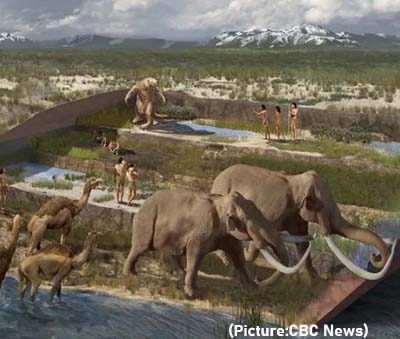 The prints were buried in layers of soil in the national park, with scientists from the US Geological Survey analyzing seeds embedded in the tracks to calculate the age of the fossils. Researchers also determined that the dozen footprints found belonged to a variety of people, mostly children and teenagers. Previously, scientists had widely assumed that the earliest appearance of humans in the Americas was 11,000 to 13,000 years ago because of stone spears found throughout North America and associated with what is known as the Clovis culture.
The prints were buried in layers of soil in the national park, with scientists from the US Geological Survey analyzing seeds embedded in the tracks to calculate the age of the fossils. Researchers also determined that the dozen footprints found belonged to a variety of people, mostly children and teenagers. Previously, scientists had widely assumed that the earliest appearance of humans in the Americas was 11,000 to 13,000 years ago because of stone spears found throughout North America and associated with what is known as the Clovis culture.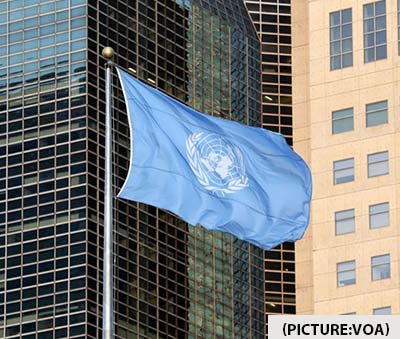 So on Monday, Guterres and United Kingdom Prime Minister Boris Johnson are hosting a closed-door session with 35 to 40 world leaders to get countries to do more leading up to the huge climate negotiations in Scotland in six weeks. Those negotiations in the fall are designed to be the next step after the
So on Monday, Guterres and United Kingdom Prime Minister Boris Johnson are hosting a closed-door session with 35 to 40 world leaders to get countries to do more leading up to the huge climate negotiations in Scotland in six weeks. Those negotiations in the fall are designed to be the next step after the 
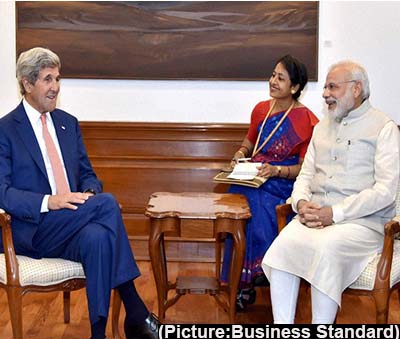 John Kerry along with Indian officials announced the Climate Action and Finance Mobilization dialogue, one of the two main tracks of the US-India Agenda 2030 Partnership that US President Joe Biden and Prime Minister Modi announced at the Leaders Summit on Climate in April this year. The CAFMD has three parts – the first being the climate action segment under which the US and India would develop proposals to curb emissions, Kerry said. The second was finance mobilization which would focus on attracting capital and technologies for India to scale up its renewable energy generation to its announced generation target of 450 GigaWatts. Over the past months, six of the largest banks in America had publicaly committed to investing a minimum of $ 4.16 trillion in the next 10 years to make the transition happen, the US envoy said. The third was climate adaptation and resilience that included efforts like extending India’s forest cover, he said.
John Kerry along with Indian officials announced the Climate Action and Finance Mobilization dialogue, one of the two main tracks of the US-India Agenda 2030 Partnership that US President Joe Biden and Prime Minister Modi announced at the Leaders Summit on Climate in April this year. The CAFMD has three parts – the first being the climate action segment under which the US and India would develop proposals to curb emissions, Kerry said. The second was finance mobilization which would focus on attracting capital and technologies for India to scale up its renewable energy generation to its announced generation target of 450 GigaWatts. Over the past months, six of the largest banks in America had publicaly committed to investing a minimum of $ 4.16 trillion in the next 10 years to make the transition happen, the US envoy said. The third was climate adaptation and resilience that included efforts like extending India’s forest cover, he said.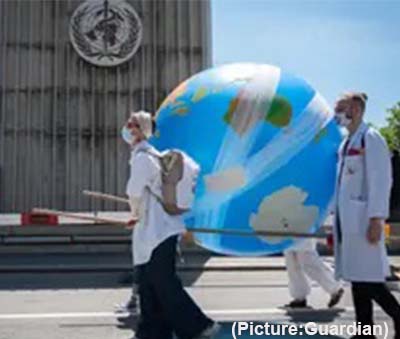 Their statement says: “Today, we are paying the price [of the climate emergency] … Tomorrow could be worse.” It concludes: “This is a critical moment. Our children’s future and the future of our common home depend on it.” The faith leaders have asked people to pray for world leaders ahead of Cop26, the global environment summit in Glasgow this autumn, and for individuals to make “meaningful sacrifices for the sake of the planet, working together and taking responsibility for how we use our resources”.
Their statement says: “Today, we are paying the price [of the climate emergency] … Tomorrow could be worse.” It concludes: “This is a critical moment. Our children’s future and the future of our common home depend on it.” The faith leaders have asked people to pray for world leaders ahead of Cop26, the global environment summit in Glasgow this autumn, and for individuals to make “meaningful sacrifices for the sake of the planet, working together and taking responsibility for how we use our resources”.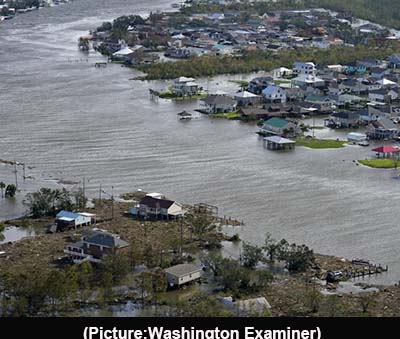 Hurricane Ida roared ashore in Louisiana on Sunday at Category 4 strength, with maximum sustained winds of 150 mph. In fact, as the eyewall of Ida hammered the Louisiana coast, a ship about 50 miles south-southwest of New Orleans clocked a peak wind gust of 172 mph, which is just shy of the strongest measured wind from a hurricane in the US. Ida was downgraded to a tropical storm moved farther inland over southeastern Louisiana and into southwestern Mississippi, the National Hurricane Center said.
Hurricane Ida roared ashore in Louisiana on Sunday at Category 4 strength, with maximum sustained winds of 150 mph. In fact, as the eyewall of Ida hammered the Louisiana coast, a ship about 50 miles south-southwest of New Orleans clocked a peak wind gust of 172 mph, which is just shy of the strongest measured wind from a hurricane in the US. Ida was downgraded to a tropical storm moved farther inland over southeastern Louisiana and into southwestern Mississippi, the National Hurricane Center said. A new study has now pointed out that these changes in the Arctic region induced by anthropogenic global warming have disrupted a wind system called Stratospheric Polar Vortex (SPV). This stretching of SPV can lead to extreme cold events in parts of Asia and North America. The report published Friday in Science adds that this SPV disruption was behind the February 2021 Texas cold wave. “The SPV consists of strong westerly winds from 10km to 50km above the surface. It peaks at around 50 m/s on average near 50km and is strongest in mid-winter, however, on occasion it can weaken, and sometimes the winds reverse direction entirely,” explains one of the authors Prof. Chaim Garfinkel in an email to indianexpress.com. He is the Head of the Graduate Program in Atmospheric Science at Hebrew University, Israel. He adds that these stretching events almost certainly occurred before greenhouse gas emissions began increasing, but the current emissions are leading to an increase in the occurrence of these types of events.
A new study has now pointed out that these changes in the Arctic region induced by anthropogenic global warming have disrupted a wind system called Stratospheric Polar Vortex (SPV). This stretching of SPV can lead to extreme cold events in parts of Asia and North America. The report published Friday in Science adds that this SPV disruption was behind the February 2021 Texas cold wave. “The SPV consists of strong westerly winds from 10km to 50km above the surface. It peaks at around 50 m/s on average near 50km and is strongest in mid-winter, however, on occasion it can weaken, and sometimes the winds reverse direction entirely,” explains one of the authors Prof. Chaim Garfinkel in an email to indianexpress.com. He is the Head of the Graduate Program in Atmospheric Science at Hebrew University, Israel. He adds that these stretching events almost certainly occurred before greenhouse gas emissions began increasing, but the current emissions are leading to an increase in the occurrence of these types of events. “United continues on its trajectory to build a more innovative, sustainable airline and today’s advancements in technology are making it more viable to include supersonic planes,” said United CEO Scott Kirby. “Boom’s vision for the future of commercial aviation, combined with the industry’s most robust route network in the world, will give business and leisure travelers access to a stellar flight experience.” The announcement is not the first of an intended partnership between a supersonic firm and a large aviation company.
“United continues on its trajectory to build a more innovative, sustainable airline and today’s advancements in technology are making it more viable to include supersonic planes,” said United CEO Scott Kirby. “Boom’s vision for the future of commercial aviation, combined with the industry’s most robust route network in the world, will give business and leisure travelers access to a stellar flight experience.” The announcement is not the first of an intended partnership between a supersonic firm and a large aviation company.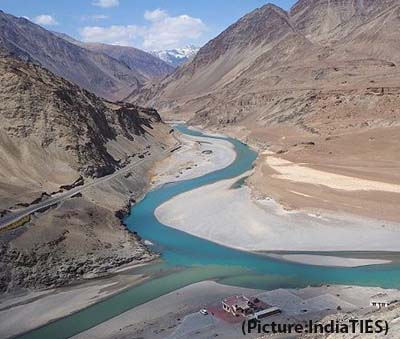 Chaired by Prime Minister Narendra Modi, the Cabinet gave its approval for signing the MoU between the GSI, under the Ministry of Mines, and the varsity’s board of trustees on behalf of its Department of Earth and Environment, a government statement said. The identified area of cooperation between the two participants would include development of geological knowledge, research regarding geologic and tectonic environment of post collisions magmatism in India-Asia collisional margin, geologic history and tectonics of the Eastern Himalayan Syntaxis and developing cooperative projects in the fields of regional geological, geochemical, petrological and multi-isotopic studies related to the evolution of post collisional magmatic belts.
Chaired by Prime Minister Narendra Modi, the Cabinet gave its approval for signing the MoU between the GSI, under the Ministry of Mines, and the varsity’s board of trustees on behalf of its Department of Earth and Environment, a government statement said. The identified area of cooperation between the two participants would include development of geological knowledge, research regarding geologic and tectonic environment of post collisions magmatism in India-Asia collisional margin, geologic history and tectonics of the Eastern Himalayan Syntaxis and developing cooperative projects in the fields of regional geological, geochemical, petrological and multi-isotopic studies related to the evolution of post collisional magmatic belts.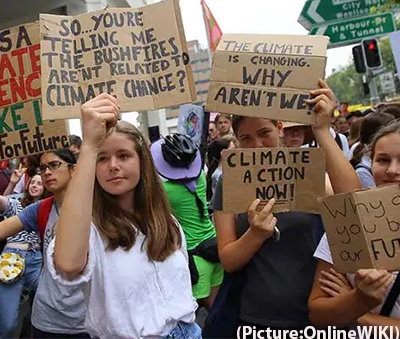 In the first index of its kind, published on Friday, UN children’s agency
In the first index of its kind, published on Friday, UN children’s agency  “If there was still a need for a proof that climate changes is caused by human activities, then this is the report that provides it,” said Prof Corinne Le Quéré of the University of East Anglia. And the consequences of humanity’s massive act of atmospheric interference are now clear: what is hot today will become hotter tomorrow; extreme floods will become more frequent, wildfires more dangerous and deadly droughts more widespread. In short,
“If there was still a need for a proof that climate changes is caused by human activities, then this is the report that provides it,” said Prof Corinne Le Quéré of the University of East Anglia. And the consequences of humanity’s massive act of atmospheric interference are now clear: what is hot today will become hotter tomorrow; extreme floods will become more frequent, wildfires more dangerous and deadly droughts more widespread. In short, 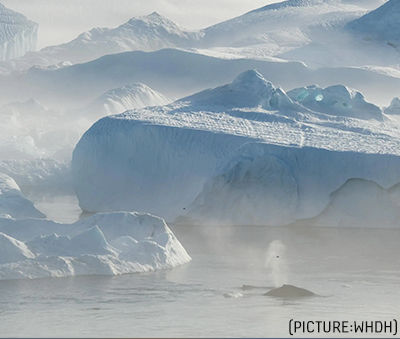 The Atlantic Meridional Overturning Circulation (AMOC) — which the Gulf Stream is a major part of — helps maintain the energy balance in the Atlantic Ocean. It is often described as a “conveyor belt” that takes warm surface water from the tropics and distributes it to the north Atlantic. The colder, saltier water then sinks and flows south.
The Atlantic Meridional Overturning Circulation (AMOC) — which the Gulf Stream is a major part of — helps maintain the energy balance in the Atlantic Ocean. It is often described as a “conveyor belt” that takes warm surface water from the tropics and distributes it to the north Atlantic. The colder, saltier water then sinks and flows south. This scenario was the premise for the 2004 climate science fiction film “The Day After Tomorrow,” in which a series of extreme weather disasters strike after climate change caused the AMOC to collapse.
This scenario was the premise for the 2004 climate science fiction film “The Day After Tomorrow,” in which a series of extreme weather disasters strike after climate change caused the AMOC to collapse. Biden signed the executive order at the White House alongside representatives from Ford, GM and Stellantis, and members of the United Auto Workers Union. The automakers are supporting Biden’s new target, announcing their “shared aspiration” that 40-50% of their cars sold by 2030 to be electric vehicles, according to a joint statement from the three automakers.
Biden signed the executive order at the White House alongside representatives from Ford, GM and Stellantis, and members of the United Auto Workers Union. The automakers are supporting Biden’s new target, announcing their “shared aspiration” that 40-50% of their cars sold by 2030 to be electric vehicles, according to a joint statement from the three automakers.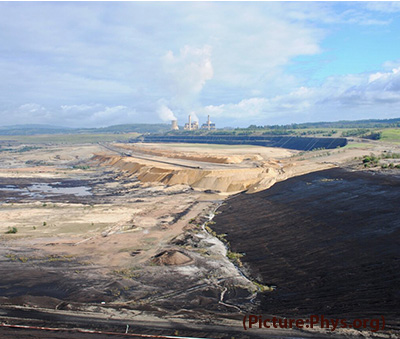 Between 40 and 34 million years ago, Earth’s climate underwent a major climatic transition. Before 40 million years ago, during the Eocene, Antarctica was covered by lush forests, but by 34 million years ago, in the Oligocene, these forests had been replaced by thick continental ice sheets, as we know Antarctica today. The main driver of this greenhouse to icehouse transition is widely debated, and little information is available about how climate changed on land. An international team led by Dr Vittoria Lauretano and
Between 40 and 34 million years ago, Earth’s climate underwent a major climatic transition. Before 40 million years ago, during the Eocene, Antarctica was covered by lush forests, but by 34 million years ago, in the Oligocene, these forests had been replaced by thick continental ice sheets, as we know Antarctica today. The main driver of this greenhouse to icehouse transition is widely debated, and little information is available about how climate changed on land. An international team led by Dr Vittoria Lauretano and  It’s not just our memories — this past June was the hottest June recorded in the U.S. in more than a century, about four degrees hotter on average. Heat waves (like in the
It’s not just our memories — this past June was the hottest June recorded in the U.S. in more than a century, about four degrees hotter on average. Heat waves (like in the  Bernardinelli and Bernstein used algorithms at the National Center for Supercomputing Applications at the University of Illinois at Urbana-Champaign to identify trans-Neptunian objects. During their work, the astronomers traced 32 detections to one object. Comets are icy relics that were kicked out of the solar system when the giant planets formed and migrated to their current configurations. As comets approach our sun during their orbits, their ices evaporate, creating their signature appearance.
Bernardinelli and Bernstein used algorithms at the National Center for Supercomputing Applications at the University of Illinois at Urbana-Champaign to identify trans-Neptunian objects. During their work, the astronomers traced 32 detections to one object. Comets are icy relics that were kicked out of the solar system when the giant planets formed and migrated to their current configurations. As comets approach our sun during their orbits, their ices evaporate, creating their signature appearance. Each yearly delineation on the sequoia’s surface is a small part of a far grander story that ties together all of life on Earth. Scientists know this as Deep Time. It’s not just on the scale of centuries, millennia, epochs, or periods, but the ongoing flow that goes back to the origins of our universe, the formation of the Earth, and the evolution of all life, up through this present moment. It’s the backdrop for everything we see around us today, and it can be understood through techniques as different as absolute dating of radioactive minerals and counting the rings of a prehistoric tree. Each part informs the whole.
Each yearly delineation on the sequoia’s surface is a small part of a far grander story that ties together all of life on Earth. Scientists know this as Deep Time. It’s not just on the scale of centuries, millennia, epochs, or periods, but the ongoing flow that goes back to the origins of our universe, the formation of the Earth, and the evolution of all life, up through this present moment. It’s the backdrop for everything we see around us today, and it can be understood through techniques as different as absolute dating of radioactive minerals and counting the rings of a prehistoric tree. Each part informs the whole. The trekking to the waterfalls, which is around 8 km from Marayoor near Alampetty on Marayoor-Udumalpet state highway, is arranged by the forest department. The guided trek from Alampetty checkpost offers a perfect opportunity to witness rare wildlife amid the lush green forests of Chinnar. If you are lucky enough, you can spot elephants, langurs, giant grizzled squirrels (Chinnar is famous for them) and numerous types of butterflies and birds. This part of the sanctuary is a rain-shadow region with a climate that is different from that what is experienced in the other parts of the state.
The trekking to the waterfalls, which is around 8 km from Marayoor near Alampetty on Marayoor-Udumalpet state highway, is arranged by the forest department. The guided trek from Alampetty checkpost offers a perfect opportunity to witness rare wildlife amid the lush green forests of Chinnar. If you are lucky enough, you can spot elephants, langurs, giant grizzled squirrels (Chinnar is famous for them) and numerous types of butterflies and birds. This part of the sanctuary is a rain-shadow region with a climate that is different from that what is experienced in the other parts of the state. The co-axial electrospinning technique is one of the most favorable and simple options to fabricate membranes with three-dimensional hierarchical structures. Dr. Woo’s research team used poly(vinylidene fluoride-co-hexafluoropropylene) as the core and silica aerogel mixed with a low concentration of the polymer as the sheath to produce a co-axial composite membrane and obtain a superhydrophobic membrane surface. In fact, silica aerogel exhibited a much lower thermal conductivity compared with that of conventional polymers, which led to increased water vapor flux during the membrane distillation process due to a reduction of conductive heat losses.
The co-axial electrospinning technique is one of the most favorable and simple options to fabricate membranes with three-dimensional hierarchical structures. Dr. Woo’s research team used poly(vinylidene fluoride-co-hexafluoropropylene) as the core and silica aerogel mixed with a low concentration of the polymer as the sheath to produce a co-axial composite membrane and obtain a superhydrophobic membrane surface. In fact, silica aerogel exhibited a much lower thermal conductivity compared with that of conventional polymers, which led to increased water vapor flux during the membrane distillation process due to a reduction of conductive heat losses. “This has the potential to be game-changing both in terms of the way research is done and to highlight the synergies between these topics. Oftentimes, because we work in silos, we tend to forget that there is such a strong interconnection between these systems and clearly between climate and biodiversity,” co-author ShobhaMaharaj told IPS. Maharaj is a lead author on the small islands chapter of the
“This has the potential to be game-changing both in terms of the way research is done and to highlight the synergies between these topics. Oftentimes, because we work in silos, we tend to forget that there is such a strong interconnection between these systems and clearly between climate and biodiversity,” co-author ShobhaMaharaj told IPS. Maharaj is a lead author on the small islands chapter of the  “Land and ocean are already doing a lot, absorbing almost 50 percent of carbon dioxide from human emissions, but nature cannot do everything,” said Ana María Hernández Salgar, Chair of IPBES. The
“Land and ocean are already doing a lot, absorbing almost 50 percent of carbon dioxide from human emissions, but nature cannot do everything,” said Ana María Hernández Salgar, Chair of IPBES. The  Over the centuries, the June solstice has inspired countless festivals,
Over the centuries, the June solstice has inspired countless festivals,  Co-authored by research scientists and engineers from WHOI, MBARI (Monterey Bay Aquarium Research Institute), and Stanford University, the paper outlines the robot’s success in autonomously tracking two gelatinous marine creatures during a 2019 research cruise in Monterey Bay. High-definition video revealed a “dinner plate” jellyfish “ramming” a siphonophore, which narrowly escaped the jelly’s venomous tentacles. Mesobot also recorded a 30-minute video of a giant larvacean, which appears to be nearly motionless but is actually riding internal waves that rise and fall 6 meters (20 feet). These observations represent the first time that a self-guided robot has tracked these small, clear creatures as they move through the water column like a “parcel of water,” said Yoerger.
Co-authored by research scientists and engineers from WHOI, MBARI (Monterey Bay Aquarium Research Institute), and Stanford University, the paper outlines the robot’s success in autonomously tracking two gelatinous marine creatures during a 2019 research cruise in Monterey Bay. High-definition video revealed a “dinner plate” jellyfish “ramming” a siphonophore, which narrowly escaped the jelly’s venomous tentacles. Mesobot also recorded a 30-minute video of a giant larvacean, which appears to be nearly motionless but is actually riding internal waves that rise and fall 6 meters (20 feet). These observations represent the first time that a self-guided robot has tracked these small, clear creatures as they move through the water column like a “parcel of water,” said Yoerger. “Young people talk about these key demands that they have and most of the time, they are criticised for always saying ‘I want this,’ and are told ‘but you’re not even sure you know what you can do,’” Global South Focal Point for the Global Youth Biodiversity Network (GYBN) SwethaStotraBhashyam told IPS. “So we linked our demands to our own actions through our ‘Your Promise, Our Future’ campaign and are showing world leaders what we are doing for the world and then asking them what they are going to do for us and our future.”
“Young people talk about these key demands that they have and most of the time, they are criticised for always saying ‘I want this,’ and are told ‘but you’re not even sure you know what you can do,’” Global South Focal Point for the Global Youth Biodiversity Network (GYBN) SwethaStotraBhashyam told IPS. “So we linked our demands to our own actions through our ‘Your Promise, Our Future’ campaign and are showing world leaders what we are doing for the world and then asking them what they are going to do for us and our future.” She told IPS the Summit was a “very powerful and immersive experience”. “I am impressed at how knowledgeable the young people of different ages were. Many spoke about recycling projects and entrepreneurship activities from their own experiences. Others shared ideas on how to use different art forms for communicating climate emergencies. Somehow, the conversation I most vividly remember was on how to disclose environmental issues in theatrical performances. I’m taking that with me as food for thought,” Garlytska said.For Emmanuel Sindikubwabo of Rwanda’s reforestation and youth environmental education organisation We Do GREEN, the Summit provided excellent networking opportunities.
She told IPS the Summit was a “very powerful and immersive experience”. “I am impressed at how knowledgeable the young people of different ages were. Many spoke about recycling projects and entrepreneurship activities from their own experiences. Others shared ideas on how to use different art forms for communicating climate emergencies. Somehow, the conversation I most vividly remember was on how to disclose environmental issues in theatrical performances. I’m taking that with me as food for thought,” Garlytska said.For Emmanuel Sindikubwabo of Rwanda’s reforestation and youth environmental education organisation We Do GREEN, the Summit provided excellent networking opportunities. In 2020 – one of the three warmest years on record – the global average temperature was 1.2 degrees Celsius above the pre-industrial baseline, according to an April
In 2020 – one of the three warmest years on record – the global average temperature was 1.2 degrees Celsius above the pre-industrial baseline, according to an April  For years, governments have tended to “kick the can” on climate policy, putting off action while the concentration of GHGs in the atmosphere continues to climb. Climate is exactly the kind of problem that humans are terrible at dealing with — a tragedy of the commons that pits future generations against the present and developing countries against the wealthy world. Nevertheless, the costs of inaction are becoming clearer, and in recent years many countries have become more serious about cutting greenhouse gas emissions.
For years, governments have tended to “kick the can” on climate policy, putting off action while the concentration of GHGs in the atmosphere continues to climb. Climate is exactly the kind of problem that humans are terrible at dealing with — a tragedy of the commons that pits future generations against the present and developing countries against the wealthy world. Nevertheless, the costs of inaction are becoming clearer, and in recent years many countries have become more serious about cutting greenhouse gas emissions. “The changes in NOAA’s new report are only a degree or less but can still have a big impact, especially when much of the past century has seen steadily increasing temperatures, with the most pronounced changes occurring in the past several decades,” said Nick Bassill, a meteorologist at the University at Albany. “The unfortunate thing is that this does not make a bigger splash, even though it’s almost universally accepted that the new climate normals were going to come in warmer than the last report.”
“The changes in NOAA’s new report are only a degree or less but can still have a big impact, especially when much of the past century has seen steadily increasing temperatures, with the most pronounced changes occurring in the past several decades,” said Nick Bassill, a meteorologist at the University at Albany. “The unfortunate thing is that this does not make a bigger splash, even though it’s almost universally accepted that the new climate normals were going to come in warmer than the last report.” The United Nations Secretary-General’s Envoy on Youth, Jayathma Wickramanayake, told IPS that the Summit achieved an important goal of bringing institutions and political conversations closer to young people. During her tenure, Wickramanayake has advocated for a common set of principles for youth engagement within the UN system, based on rights, safety and adequate financing. She said it is important for institutions to open their doors to meaningful engagement with young people.
The United Nations Secretary-General’s Envoy on Youth, Jayathma Wickramanayake, told IPS that the Summit achieved an important goal of bringing institutions and political conversations closer to young people. During her tenure, Wickramanayake has advocated for a common set of principles for youth engagement within the UN system, based on rights, safety and adequate financing. She said it is important for institutions to open their doors to meaningful engagement with young people.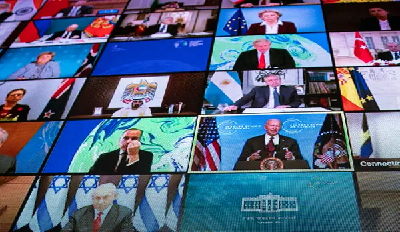 As part of the 2015 Paris Agreement, wealthy nations agreed to set aside $100 billion a year in climate financing to help developing nations adapt to climate change and transition to renewable sources of power. But it is still underfunded—in 2018, the latest information available, countries had only committed a total of $78.9 billion—and does nothing to stop the dozens of fossil fuel projects already in progress on the continent.
As part of the 2015 Paris Agreement, wealthy nations agreed to set aside $100 billion a year in climate financing to help developing nations adapt to climate change and transition to renewable sources of power. But it is still underfunded—in 2018, the latest information available, countries had only committed a total of $78.9 billion—and does nothing to stop the dozens of fossil fuel projects already in progress on the continent. To help meet this goal, he said that the US will double by 2024 “our annual public climate development finance to developing countries compared to what we were providing during the second half of Obama-Biden administration”.
To help meet this goal, he said that the US will double by 2024 “our annual public climate development finance to developing countries compared to what we were providing during the second half of Obama-Biden administration”.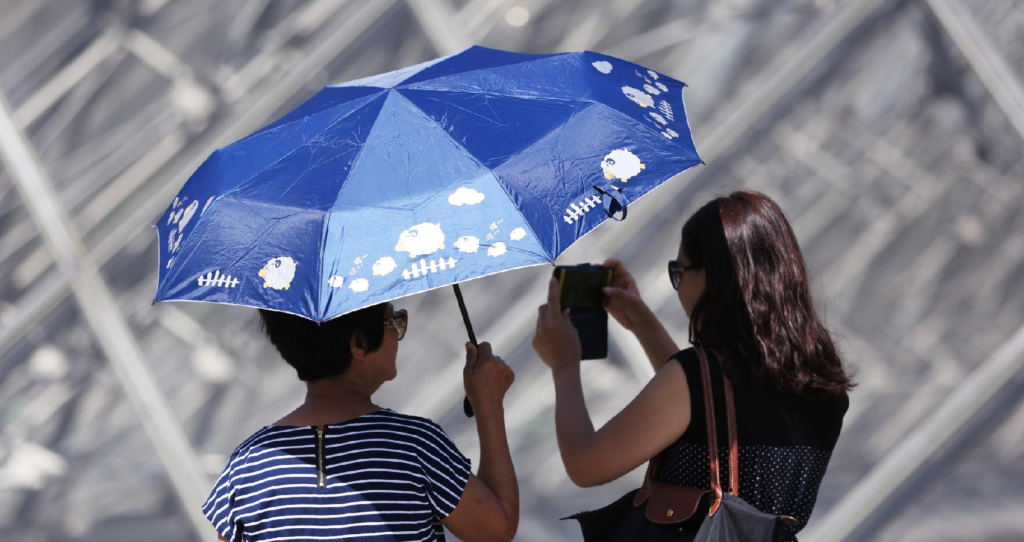 United States Special Presidential Envoy for Climate, John Kerry had met Prime Minister Narendra Modi and environment minister Prakash Javadekar earlier this month regarding increasing climate ambition ahead of COP 26 in Glasgow this November. Minister for Europe and Foreign Affairs of France, Jean-Yves Le Drian had also met Javadekar and said all countries should be on track to achieve carbon neutrality and start phasing out coal.
United States Special Presidential Envoy for Climate, John Kerry had met Prime Minister Narendra Modi and environment minister Prakash Javadekar earlier this month regarding increasing climate ambition ahead of COP 26 in Glasgow this November. Minister for Europe and Foreign Affairs of France, Jean-Yves Le Drian had also met Javadekar and said all countries should be on track to achieve carbon neutrality and start phasing out coal. Indian government sources said the South Asian country was unlikely to bind itself to the 2050 goal as its energy demand was projected to grow more than that of any other country over the next two decades.
Indian government sources said the South Asian country was unlikely to bind itself to the 2050 goal as its energy demand was projected to grow more than that of any other country over the next two decades. This year’s bloom is also the earliest since the Japan Meteorological Agency started collecting the data in 1953 and 10 days ahead of the 30-year average. Similar records were set this year in more than a dozen cities across Japan.
This year’s bloom is also the earliest since the Japan Meteorological Agency started collecting the data in 1953 and 10 days ahead of the 30-year average. Similar records were set this year in more than a dozen cities across Japan. The downward trend is about 13% per decade, averaged across the month of September. “This reflects the warming of the Arctic,” said Prof Rex. “The ice is disappearing and if in a few decades we have an ice-free Arctic – this will have a major impact on the climate around the world.”
The downward trend is about 13% per decade, averaged across the month of September. “This reflects the warming of the Arctic,” said Prof Rex. “The ice is disappearing and if in a few decades we have an ice-free Arctic – this will have a major impact on the climate around the world.” Coronavirus only briefly interrupted the expedition – not by making participants ill, but by obliging the ship at one point to leave the floes to go pick up its next rotation of scientists. Other ships and planes were supposed to deliver the participants direct to RV Polarstern, but international movement restrictions made this extremely challenging in the early-to-middle part of this year.
Coronavirus only briefly interrupted the expedition – not by making participants ill, but by obliging the ship at one point to leave the floes to go pick up its next rotation of scientists. Other ships and planes were supposed to deliver the participants direct to RV Polarstern, but international movement restrictions made this extremely challenging in the early-to-middle part of this year.

